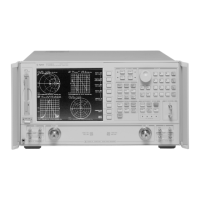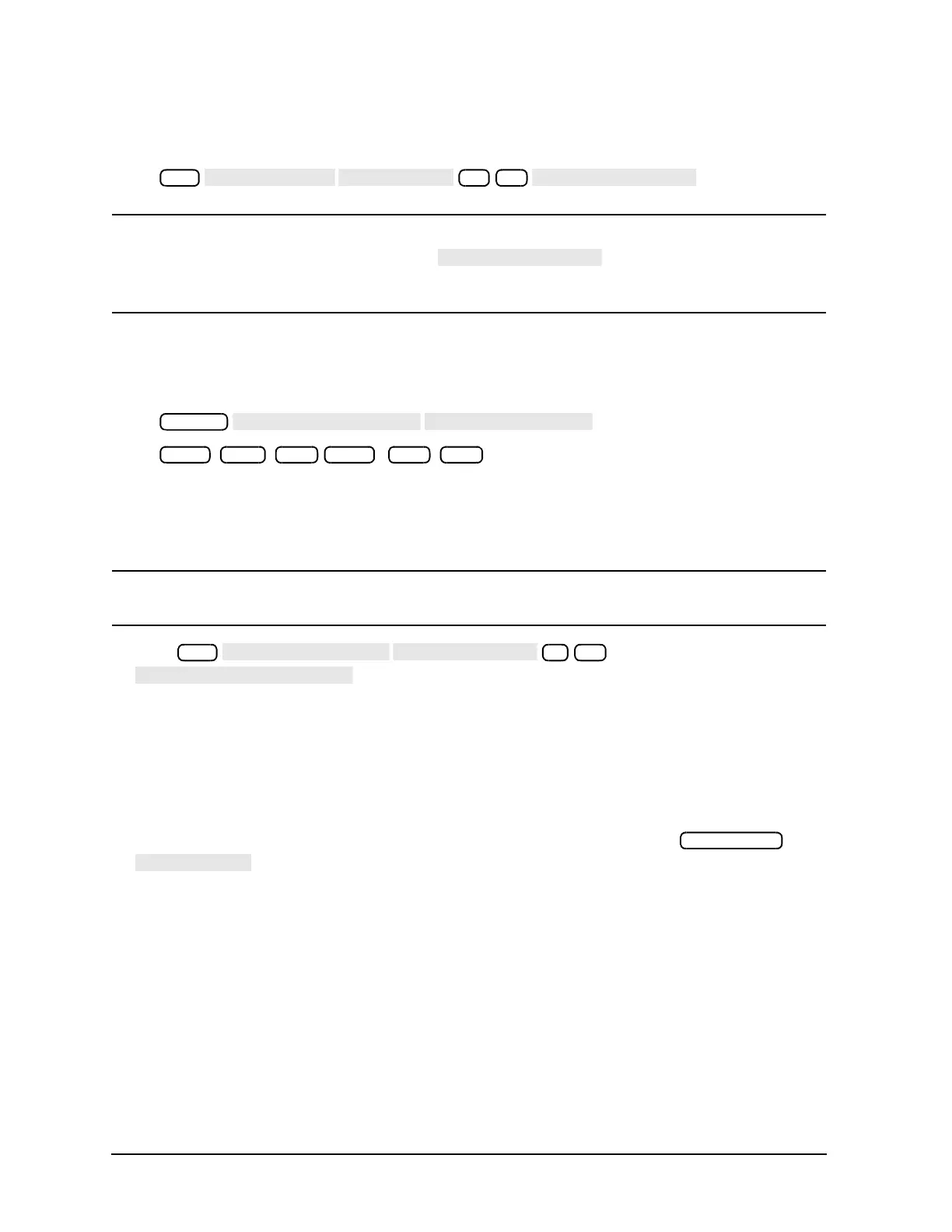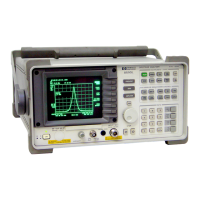2-16
Making Mixer Measurements
Conversion Loss Using the Frequency Offset Mode
5. To perform a one sweep power meter calibration over the RF frequency range at 0 dBm, press:
NOTE Because power meter calibration requires a longer sweep time, you may want to reduce the
number of points before pressing
. After the power meter
calibration is finished, return the number of points to its original value and the analyzer will
automatically interpolate this calibration.
6. Make sure the power meter calibration is on. When the power meter calibration is on, “PC” is displayed
at the left edge of the display. Refer to
Figure 2-15 on page 2-19 for an example.
7. From the front panel of the analyzer, set the desired IF start and stop frequencies by pressing:
Note that these are the example IF start and stop frequencies. Enter the IF start and stop
frequencies for your measurement instead.
8. To calibrate the R channel over the IF range, connect the equipment as shown in Step 2 of Figure 2-11.
NOTE An error message will be displayed while the R In port is disconnected. Ignore this error
message until R In port is reconnected.
9. Press
.
❏ The low pass filter is required to limit the range of frequencies passed into the R channel input port.
The filter is selected to pass the IF frequencies for the measurement but prevent the LO feedthrough
and unwanted mixer products from confusing the phase-lock loop operation.
❏ A pad is used to isolate the filter and improve the IF port match for the mixer.
Once completed, the display should read 0 dBm.
10. Save the power meter and receiver calibration to an instrument state by pressing
.

